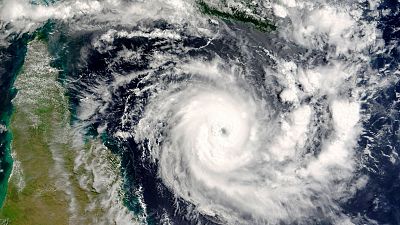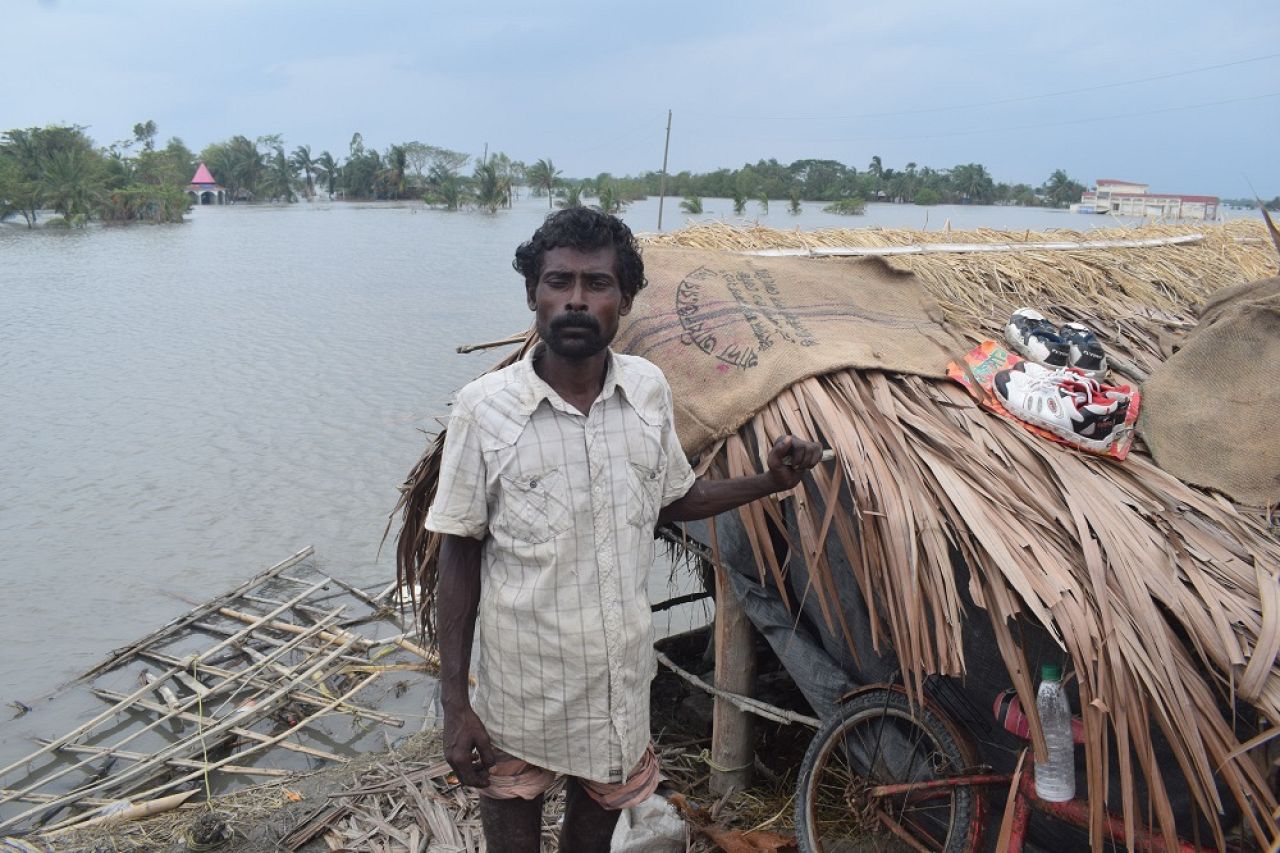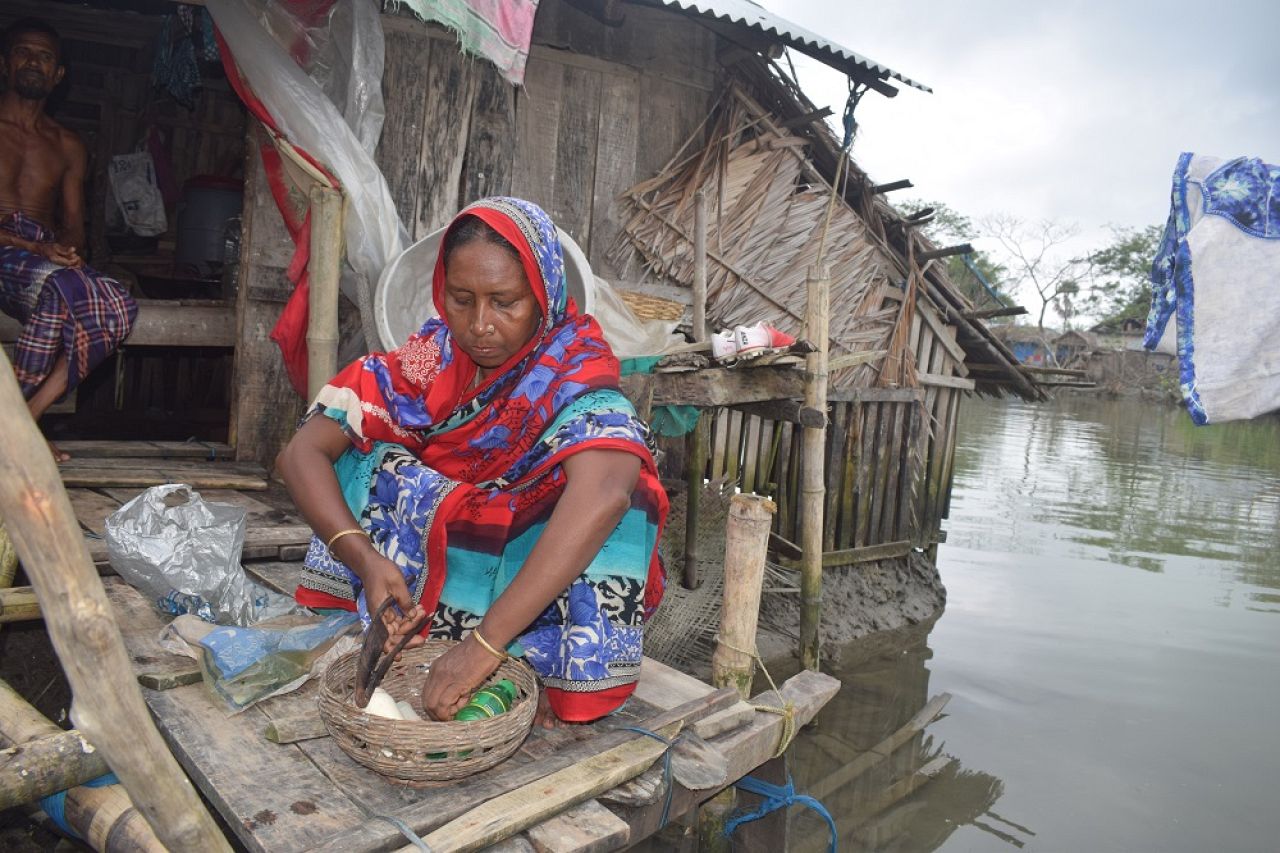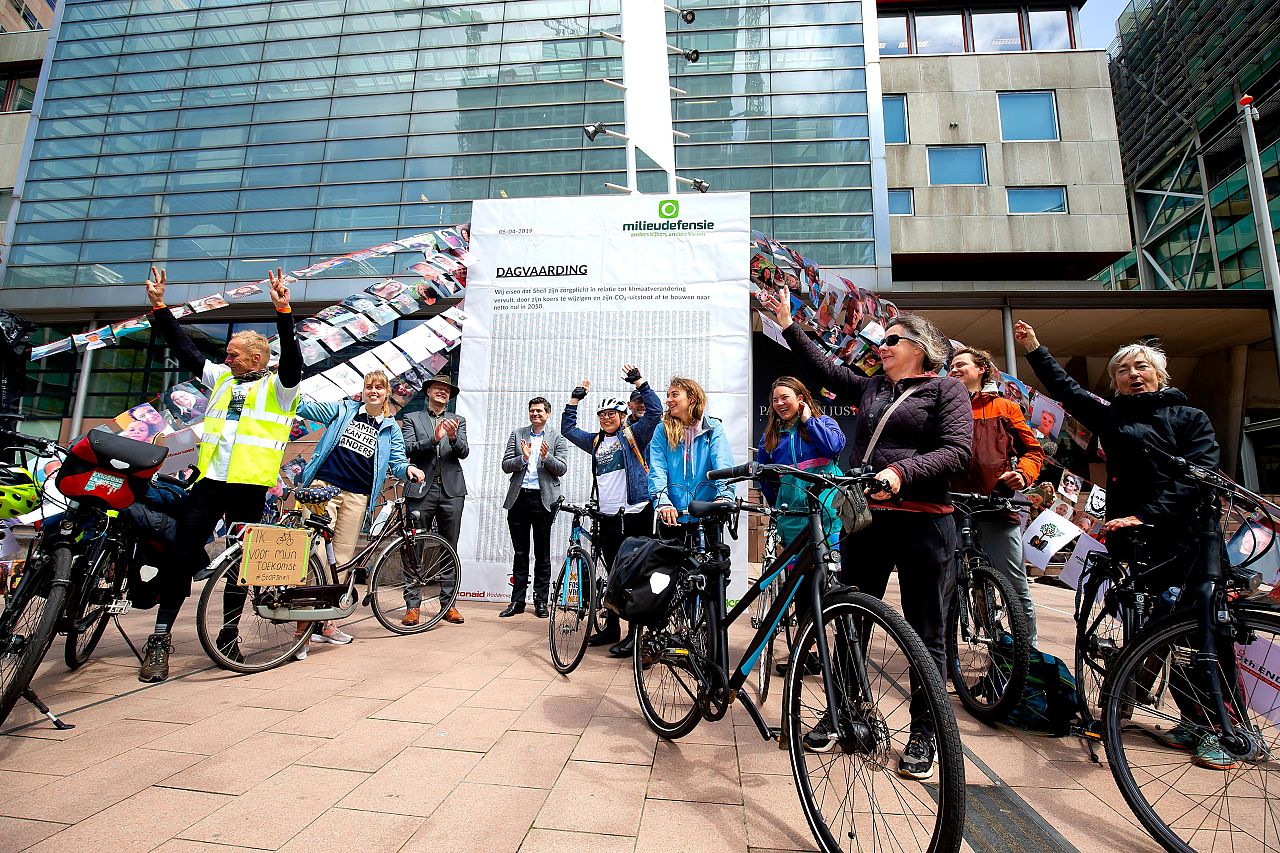Missing wind variability means future impacts of climate change may be underestimated in Europe and North America

Extratropical winds have a strong influence on climate in extratropical regions, and are known to vary from decade to decade. However, their variability is currently not factored into climate models making predictions for future climates in these regions. Researchers inserted these into predictions for how extratropical climates will change by the middle of the century, and found uncertainty increased significantly, meaning unusually hot, cold, dry or wet decades are likely to be more frequent here than previously thought.
Climate models may be underestimating the impact climate change will have on the UK, North America and other extratropical regions due to a crucial missing element, new research has shown.
Scientists at the University of Reading have warned that current projections of how a warming world will affect regional temperatures and rainfall do not take into account the fact that extratropical winds—which have a strong influence on climate in the mid-latitudes—vary greatly from decade to decade.
The research team used observations of these winds over the 20th century to better represent their variability in climate model predictions of the future. They found that this made the predictions of future climate less certain in the extratropics—particularly in the North Atlantic region and particularly in winter—and that unusually hot, cold, wet or dry decades are projected to be much more likely by the middle of the century in this region than existing climate simulations suggest.
Dr. Christopher O'Reilly, a Royal Society University Research Fellow in the University of Reading's Department of Meteorology, said: "Variations between decades in the strength of winds in the more temperate regions of the world are a crucial missing ingredient in projections of the future climate of those regions.
"By adding this extra variability into climate models, we showed that these winds may be an additional source of uncertainty on top of climate change. This could mean that within these regions, temperatures are pushed to relatively extreme highs or lows more often. While in some decades they could counteract increases to temperatures and heavy rainfall caused by climate change, in other periods they could make these extremes even more extreme.
"This is yet another reminder that preparation will be crucial as we face up to more variable regional climates as an impact of climate change in the future."
The team used wind observation data from the Met Office, Copernicus Climate Data Store and NOAA, among others, to carry out their analysis and bolster the climate model predictions.
The range of temperature and rainfall most likely to occur in future decades increased by 50% across Northern Europe, Northern America and the Mediterranean—with uncertainty nearly doubling in some cases.
This strengthens previous research that suggests rainfall and temperatures that are very unlikely today will fall within the likely range in future due to climate change.
The updated projections showed that the Mediterranean would see a higher frequency of drier-than-average winters. As studies show that dry winters in this region make heatwaves in Europe more common the following summer, this has health and infrastructure implications for several countries.
The study is published in Communications Earth & Environment.Rainfall becomes increasingly variable as climate warms
More information: Projections of northern hemisphere extratropical climate underestimate internal variability and associated uncertainty, Communications Earth & Environment, DOI: 10.1038/s43247-021-00268-7
Journal information: Communications Earth & Environment
Provided by University of Reading

Cyclones could soon devastate Europe. - Copyright Canva
By Inva Hasanaliaj MA Journalism • Updated: 20/09/2021 -
Meteorologist Nadia Bloemendaal can see into the future and it’s looking rough.
For now, she models data on extreme weather in the Global South but it’s already revealing trends that could shape life in Europe in the next 50 years.
Many young people worried about the climate crisis take up activism, but Bloemendaal prefers being behind a computer screen. This is where she says she can really make a difference.
Her work combines meteorology, mathematics and physics to produce a real-world picture of our changing weather. It’s the kind of scientific evidence informing climate policy debates worldwide.
Bloemendaal developed her cyclone early-warning system for communities in the Global South, and it’s now ringing alarm bells much closer to home. Recent bouts of extreme weather in Europe could be a sign of things to come.
In July floods hit Germany and Belgium, killing at least 180 people but storm warnings allowed the Netherlands to avoid casualties. These storms were a clear signal that Europe needs to start adapting to extreme weather, setting up “..early warning systems and adequate communication … that can save lives,” says Bloemendaal.
Look at climate change as the fuel for tropical cyclones she says, and if seawater reaches a temperature of 30 degrees Celsius that’s a lot of ‘cyclone fuel’.
“Climate change is the fuel for the tropical cyclone if we are going to have water that is 30 degrees Celsius that’s a lot of fuel for tropical cyclones to keep going and keep intensifying”.

The scenario is set to get worse as temperatures increase and sea levels rise in the south. The effect of this could be temperatures in northern coastal regions reaching up to 27 degrees Celsius. Based on the science she is seeing, Bloemendaal says parts of the world that don’t see tropical cyclones now, may see them in the next 30 to 50 years.
She adds that we’re already experiencing the effects of climate change in Europe, arguing that based on the scientific data she’s seeing, the world has only a couple of years to stall its progress.
“There is research out there suggesting that we are going to see more hurricane-force storms which were once tropical cyclones and have moved into Europe,” Bloemendaal warns.
The 2021 Intergovernmental Panel on Climate Change (IPCC) report underlines this. Even at a targeted 1.5 degrees Celsius level of global warming, heavy rains and flooding are likely to increase in Europe, Africa, Asia, and North America.
The IPCC report says observational data from North America, Europe and Asia signals clearly that ‘human influence’ is the key factor in driving extreme weather.
Fixing the hole in the ozone layer was a success. How can we learn from it to cut carbon emissions?
Why stopping deforestation doesn't just save lives, it revives economies
What's it like being a 'storm chaser'?
Bloemendaal is keen to communicate her research in terms people without a scientific background can understand and has been fascinated by weather since she was a child.
“The way I got into meteorology is watching the movie Twister,” she says.
“That’s what started my interest in severe weather. That was the moment I was like, OK, I’m going to be a meteorologist. I want to be a storm chaser. I want to hunt those tornadoes.
"I want to find out more about them and I want to come up with a mechanism to basically save people from severe weather.”
Based at Amsterdam University’s Faculty of Science, Water and Climate Risk, Bloemendaal’s work is attracting a lot of attention from the wider scientific and business community.
I want to hunt those tornadoes - I want to find out more about them and I want to come up with a mechanism to basically save people from severe weather.
In the last two years, she has received prizes for her work on climate risk from Allianz and Lloyd’s. In 2020 she was part of the team awarded the Dutch Data Prize for their STORM dataset, which models tropical cyclone risk.
STORM uses historical records of all cyclone locations, adding meteorological data and current risk factors like climate change. It then models predictions of when the next tropical storm is going to hit and how intense it will be.
Rich nations like the US experience tropical cyclones and have sophisticated warning systems, but STORM is designed to be used everywhere. It can help protect people at the most basic level, by asking questions like “How big are the chances that your house is gone get hit by a tropical cyclone?” says Bloemendaal.
On the frontline of the climate crisis
For those living on the frontlines of the climate crisis, it’s only too clear cyclone warnings could save lives and livelihoods.
Kartik Chandra Mandal, 42, a farmer from Hajatkhali in Bangladesh, has twice seen his life devastated by tropical storms. In 2009 he was forced to abandon rice paddy fields which turned saline when flooded by seawater.
Mandal then had a job on a shrimp farm which was also ruined by extreme weather and ended up as a factory worker. In 2020, Cyclone Amphan swept his house away and now the family live perched precariously on a flood embankment.

“Frequent cyclones and other natural disasters make chaos of my life,” said Mandal.
“Natural disasters brought my life to zero, made me poorer, crippled me financially. I lost everything. My living expenses and debt burden increased a lot, now I make my living by borrowing.”
When Cyclone Amphan hit Sreepur in central Bangladesh, it brought saltwater flooding which left Sufia Begum’s village house underwater for the next ten months.
Begum 38, lost everything and she is certain the cause is climate change.
“We are tackling crises caused by climate change,” said Begum. ”Natural disasters have put an end to our normal livelihoods, we have to fight to make a living.”
Bangladesh has a small carbon footprint compared to other nations, including those in the Global North, but sees a much greater impact from the effects of global warming.

The experience of people like Begum and Mandal may feel abstract to voters in Europe. Bloemendaal’s risk modelling, however, makes a powerful real-world case for politicians here to take action.
The message is starting to filter through and young European voters have put the climate crisis firmly on their agenda. Data from the Reuters Institute Digital News Report in 2020 reveals over 72 per cent of people in the Global South are worried about climate change. But in Northern Europe, still only half this number voice concern and in the Netherlands, the figure is 5 per cent.
Dutch student Kim van Wijngaarden, 23, wants a tougher approach to the crisis from her country’s political leaders. She runs social media for Jongeren Milieu Actief or ‘Youth for Climate’ (JMA), publicising the group’s climate manifesto.
Drawn up with veteran Dutch politician and physicist Jan Terlouw alongside a group of other political youth organisations, the manifesto set out nine key actions JMA wants the government to implement. One of those was calling for a ‘green’ vote in the elections of March 2021.
With current policy, both in the Netherlands and worldwide, we are not going to stop the effects of harmful climate change.
Van Wijngaarden joined other young activists who staged a public climate debate in front of the panel of judges in a lower court in the Hague.
“I know we need to take radical action,” says Van Wijngaarden, “I want a future, a future to be happy about. With current policy, both in the Netherlands and worldwide, we are not going to stop the effects of harmful climate change.”
General elections were held in the Netherlands from 15 to 17 March 2021 to elect all 150 members of the House of Representatives. The winner was the current Prime Minister, Mark Rutte and his People's Party for Freedom and Democracy.
Europe will miss its 2030 climate goal by 21 years at current pace
Roadtripping though a heatwave and wildfires: Is this the new normal for summer holidays?
Court action on climate change
Perhaps more effective was the court case climate activists, including JMA, brought against Royal Dutch Shell. On May 26 this year a Dutch court ruled Shell must cut its carbon emissions by 45 per cent by 2030, to meet targets set out in the 2015 Paris Climate Agreement.
The law has become a more powerful tool than mainstream politics in the fight against global warming, says Marjan Minnesma. She is the director of the Urgenda Foundation, which recently won another court case - this time against the Dutch state.
Urgenda and 900 individual Dutch citizens sued their government to require it to do more to prevent climate change. They won the case and the Dutch state is now legally obliged to limit Greenhouse gas emissions to 25 per cent below 1990 levels, by 2020.

Minnesma points to the fast reaction by political leaders to Covid-19. She’d like to see the same decisive action on climate but isn’t optimistic.
“The Coronavirus is much more tangible than CO2 emissions due to its directly measurable consequences. The link between coal-fired power plants and flooding is difficult for many people to see,” she explains.
Guided by her scientific modelling and seeing clearly the predicament her own generation faces, Bloemendaal shares this sense of urgency.
“This pandemic hopefully will be sorted out in the next year or two, but climate change is going to happen over the next 20 to 30 years,” she argues.
“If you don’t do something right now you are going to see devastating effects in the future.”
It’s not only up to young people to act she adds.
"Just because you don’t live to see it doesn’t mean it isn’t going to happen."
This article is a part of a 2021 series between Euronews Green and Falmouth University.
Inva Hasanaliaj is studying for an MA in Journalism at Falmouth University. In this piece she shares how lessons learnt in the Global South could encourage Europeans to take action on climate change.
Additional sources • RAFIQUL ISLAM MONTU
No comments:
Post a Comment